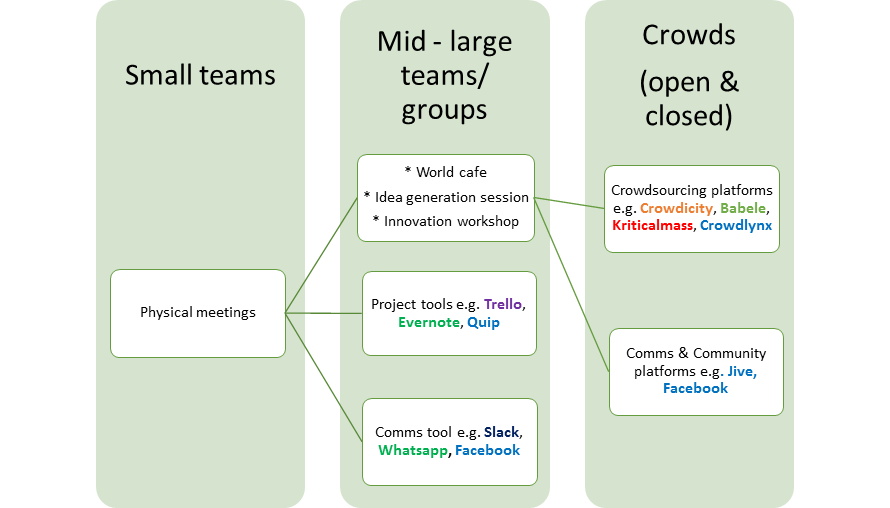A successful crowdsourcing campaign requires considerable resources, both for the organisers and the participants. Having said this, successful campaigns don’t rely on the use of an official crowdsourcing platform or tool, which many budgets cannot stretch to. Instead, free tools are also an option.

This image highlights the best ways to collaborate, depending on the size of your group.
Small teams
For small teams, physical meetings work better than crowdsourcing. They are far more interactive and can produce better results for a small number of participants.
If your team is spread across several different locations, you might want to try various online collaboration tools, such as Yammer, Facebook or Google apps. These are not specifically designed for crowdsourcing, but they’re cheaper options that can be used as an effective workaround.
Mid - large teams/ groups
For teams that work in the same office, physical meetings are also preferable. But if it becomes too difficult to gather everyone in the same room, you could try free online options, such as private Facebook or LinkedIn groups, which will allow you to share ideas and collect votes on them (here is an example of using Facebook for crowdsourcing). Other more focused tools, such as Podio, are free for fewer than five users, and Loomio is available on a “gift” basis.
Sometimes, it’s important to generate buy-in within an entire organisation. In these cases, it’s better to use platforms that work for large groups (eg, Open Space and World Cafe©) than simply selecting the most popular idea, which may not be supported by all participants.
Crowds
Larger groups of people (crowds) will need a little more work to coordinate and therefore an online platform can help manage the dissemination of knowledge, connect participants and create a virtual space to collaborate. There are a number of crowdsourcing platforms that you can use for this process: for example, Babele, Crowdlynx or Crowdicity, to name a few. Which platform you choose will depend on your budget and your communication needs.
NOTE: You may see that we reference Crowdicity and Babele in some sections of this site as platform examples; please be aware that the same lessons will apply to other platforms that have similar features and functionality.
We'd love to hear from you about other platforms you have found to be useful.
